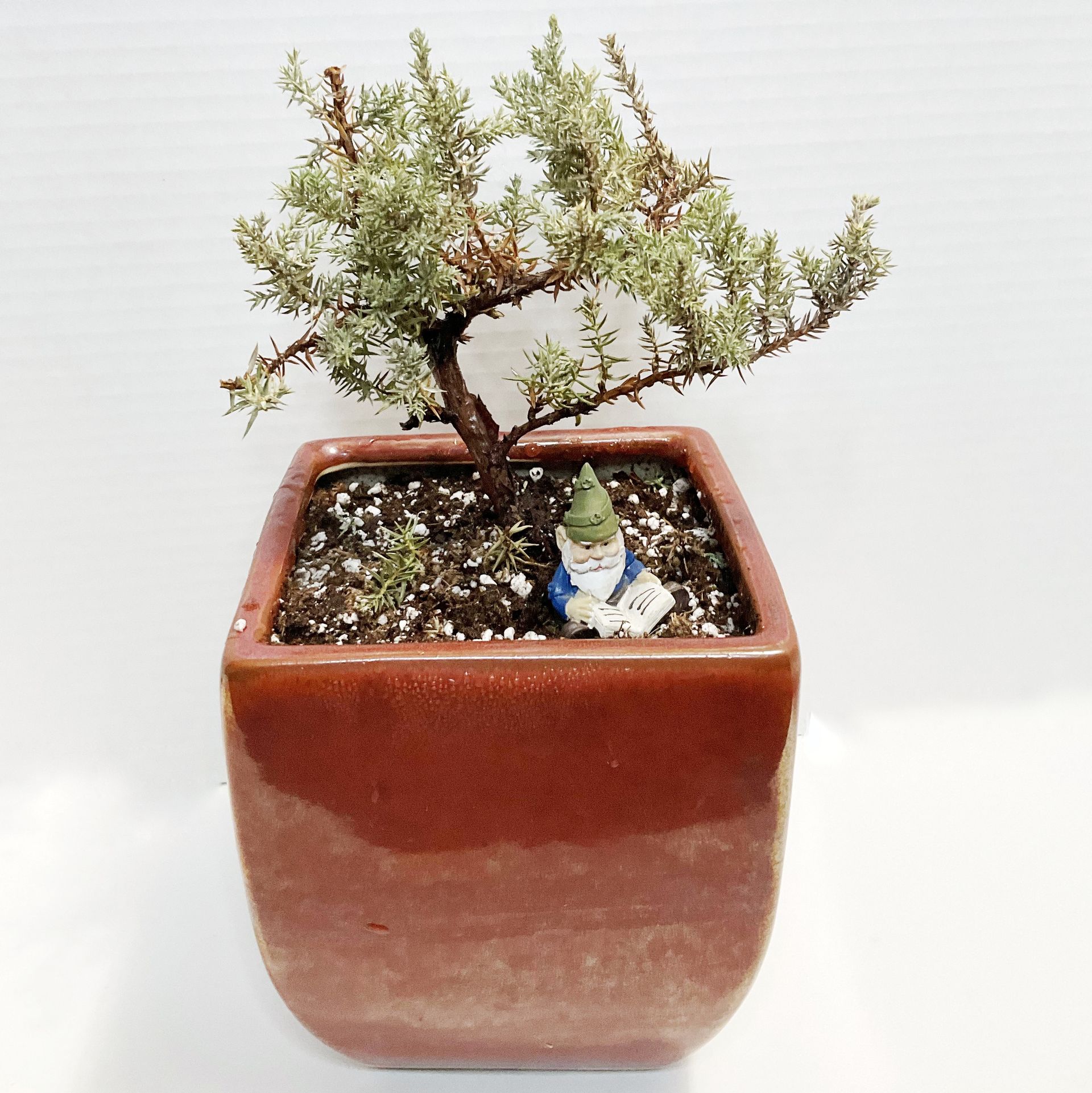Enjoying Outside, Inside - Bonsai Trees

Confession- I have a secret obsession with the tiny home movement. I am constantly downsizing my possessions, always bearing in mind that tiny square of roped off space the host of my favorite tiny homes show tells his latest guests they must fit their possessions into so they can truly embrace their tiny home dreams. When my time comes, he won’t have to do that exercise with me. But the one thing I can’t let go of, the thing I must have in my tiny home, are living plants. A little bit of the outside brought inside. So, how do you manage plants in a tiny space? You go tiny of course- with Bonsai trees.
A couple of years ago I decided to give Bonsai trees a go. I ultimately want to grow them from seed but it’s not as easy as one might think and I’m still working my way towards my first sapling turned true Bonsai. In the meantime, my mom gifted me with a ready-to-tend Bonsai to get my collection started. It takes about 3-5 years to go from seed to Bonsai, so it’s not uncommon to begin a Bonsai project with plants in different stages.
Bonsai trees are truly trees in miniature. They begin from the seed of a standard sized tree. They eventually sprout and become saplings, just as their larger counterparts would. But careful tending of the plant which includes pruning, shallow planting, wiring and more creates a form of the large tree in miniature. Most individuals who raise Bonsai trees consider it an art form as much as a horticultural pursuit. The objective, after all, is to imitate the larger living tree in miniature and it’s for this reason that I love the hobby and consider it such an important part of my tiny home living. Being amongst the trees, particularly in a heavily forested area, brings me peace. The trees in my home bring that same peace from the outside, in.
If you are interested in pursuing your own Bonsai tree project, here are a few things worth knowing as you begin (and perhaps some fun facts, even if you aren’t raising Bonsai trees).
- Bonsai trees are not their own species of tree. Any tree species can become a Bonsai tree with proper care and maintenance.
- While any tree species can become a Bonsai tree, the species you choose to raise does matter. You will want to keep in mind things like whether you intend to keep the plant inside. Like their larger counterparts, most Bonsai trees will prefer to be outside but sub-tropical and tropical species do well inside.
- You can order seeds, kits, and more online but you can also (where appropriate and allowed) collect seeds and saplings to start your Bonsai collection. It’s very important, however, to remember to check whether collections are allowed in the area you are hiking or visiting before doing this.
- Flowering and fruit-bearing tree species work too… and they will bear their flowers and fruit! The tree will not bear nearly as much fruit as its larger counterpart, but the fruit will be relatively the same size.
RECENT ARTICLES






